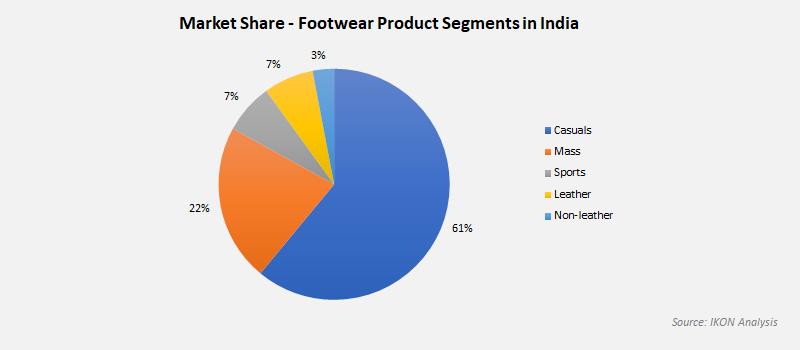The Indian Footwear : Landscape of Domestic Leaders and International Giants.
Navigating the Indian Footwear Market: A Ground of Domestic Leaders and International Giants.
The Indian footwear market is a dynamic and rapidly growing industry, poised to reach a valuation of US$ 35.43 billion by 2029. This growth is fueled by a burgeoning middle class, increasing disposable incomes, and a growing preference for branded footwear. The market is characterized by a diverse mix of domestic and international players, each vying for a share of the expanding consumer base.

Domestic Market Leaders: A Legacy of Craftsmanship and Adaptability
Indian footwear market is dominated by a handful of domestic players who have established a strong foothold through decades of experience, quality products, and a deep understanding of consumer preferences. These brands have successfully adapted to the changing market dynamics, embracing e-commerce and expanding their product offerings to cater to a wider range of consumers.
- Bata: The undisputed king of the Indian footwear market, Bata is a household name synonymous with comfort and affordability. With a vast network of over 12,000 stores across the country, Bata has successfully captured the hearts of millions of Indian consumers.
- Liberty Shoes: A pioneer in the Indian footwear industry, Liberty Shoes is known for its high-quality leather footwear and its commitment to innovation. The brand has a strong presence in the premium segment and has recently expanded its portfolio to include athleisure footwear.
- Paragon: A leading manufacturer of casual and formal footwear, Paragon is known for its stylish and affordable designs. The brand has a strong presence in Tier II and Tier III cities and has been instrumental in bridging the gap between urban and rural footwear consumption.

International Companies: Bringing Global Trends and Innovation.
International footwear brands have also made significant inroads into the Indian market, bringing with them global trends, innovative designs, and a strong brand presence. These brands have partnered with Indian distributors and established their own retail stores to reach a wider audience.
- Nike: The global sportswear giant, Nike, has established a strong presence in India, catering to the growing demand for athleisure footwear. The brand's innovative designs and celebrity endorsements have made it a favorite among fitness enthusiasts and fashion-conscious consumers.
- Adidas: Another global sportswear leader, Adidas, has a significant presence in the Indian footwear market. The brand's focus on performance footwear and its association with popular sports personalities has resonated well with Indian consumers.
- Puma: A German sportswear brand known for its stylish and performance-oriented footwear, Puma has made significant gains in the Indian market. The brand's collaborations with international designers and its focus on the youth segment have contributed to its popularity.

A Competitive Landscape: Domestic vs. International Brands.
The Indian footwear market is a battleground for domestic and international brands, each vying for a larger share of the consumer pie. While domestic brands have a strong foothold in the value segment and a deep understanding of local preferences, international brands bring with them global trends, innovative designs, and strong brand recognition.
Domestic brands hold a significant advantage in terms of cost-competitiveness and supply chain efficiency.
Their understanding of Indian consumer preferences allows them to cater to the specific needs of the market. Additionally, domestic brands have a strong presence in Tier II and Tier III cities, where international brands are still expanding their reach.
International brands, on the other hand, bring with them global trends, cutting-edge technology, and strong brand recognition.
They are able to leverage their international expertise to develop innovative products and marketing strategies. Additionally, international brands have a strong presence in the premium segment, where domestic brands are still gaining traction.

The Future of the Indian Footwear Market: A Collaborative Approach.
The Indian footwear market is poised for continued growth in the coming years, driven by increasing urbanization, rising disposable incomes, and a growing demand for branded footwear. Domestic and international brands will need to collaborate to tap into this potential and create a sustainable and profitable footwear ecosystem.
Domestic brands can leverage the global expertise of international brands to develop innovative products and marketing strategies. Additionally, domestic brands can expand their international presence through partnerships and joint ventures.
International brands can benefit from the local market knowledge and distribution networks of domestic brands. Additionally, international brands can adapt their products and marketing strategies to cater to the specific preferences of Indian consumers.
By collaborating and leveraging their respective strengths, domestic and international brands can create a thriving footwear industry that caters to the diverse needs of Indian consumers.
FOLLOW @TechieGuy FOR MORE SUCH AMAZING CONTENT 🤙🤟.
Please sign in
Login and share

























